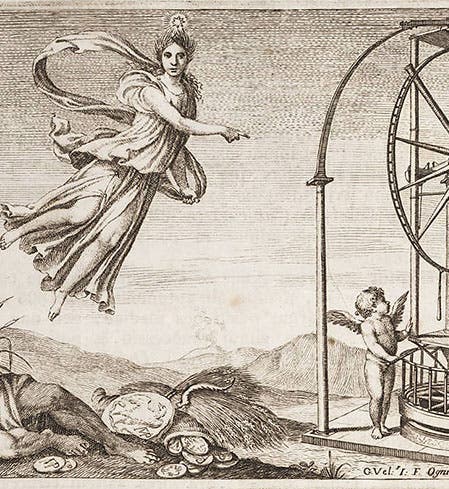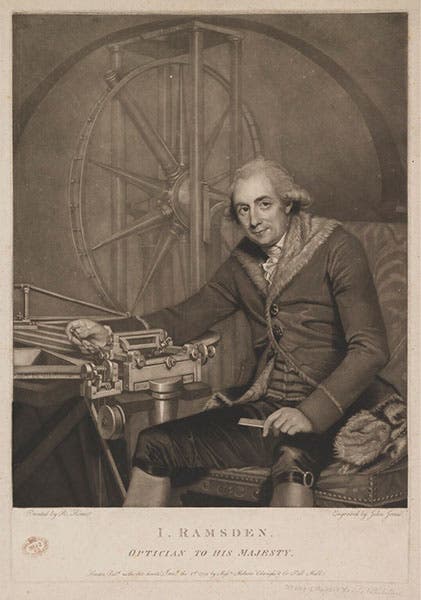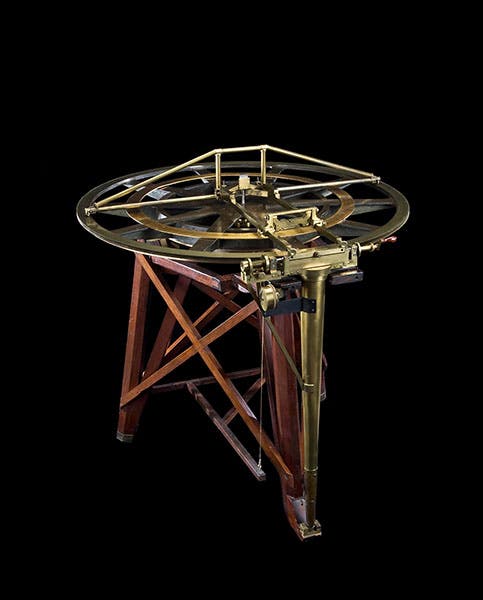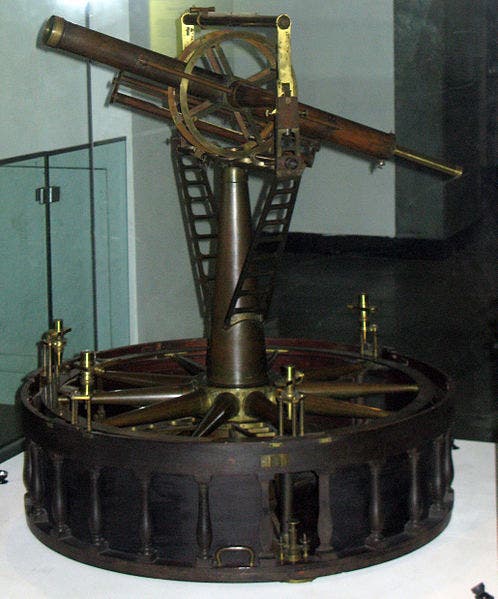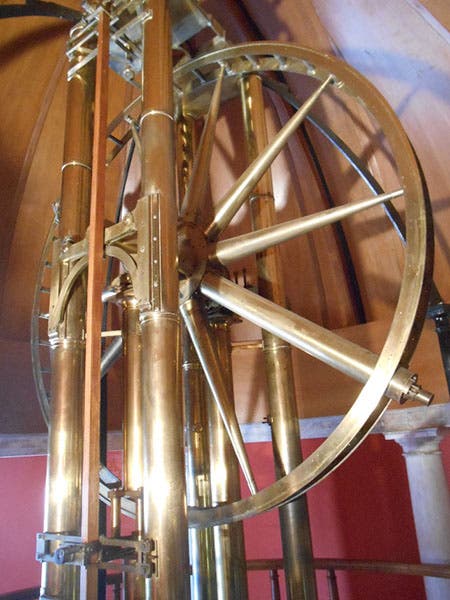Scientist of the Day - Jesse Ramsden
Jesse Ramsden, an English instrument maker, died Nov. 5, 1800, at the age of 65. Ramsden was one of the finest scientific instrument makers in Britain in the last half of the 18th century. Three of his instruments are especially noteworthy. The first was a dividing engine. In order to make an accurate sextant, octant, armillary, theodolite, or other instrument with a circular scale, you first need some way to help you divide a circle into 360 equal parts or degrees, and then those degrees into minutes. The more precise this division, the more accurate your instrument will be. Ramsden invented a dividing engine in the 1770s that brought unprecedented precision to the task of dividing a circle.
It was considered such an important contribution to navigation that when the Longitude Board gave out its awards for developments that helped solve the longitude problem, most of the prize money went to John Harrison, but £615 went to Ramsden for his dividing engine. The Smithsonian Institution has one of Ramsden's dividing engines, reportedly the very one that won the Longitude Prize, and the one we show here (third image). Even if you don't know anything about instruments, you will probably agree that this just looks like a precision instrument.
Another highly regarded Ramsden instrument was his theodolite. In fact, he made two of them. A theodolite is a surveying instrument, intended for taking accurate readings of distant markers, allowing surveyors to triangulate their way across country. Ramsden’s two theodolites were used in the first government-sponsored triangulation of Great Britain in the 1790s. Although quite heavy, they were carted through vale and hill all over England, maintaining their accuracy.in spite of their rough treatment. The theodolite of 1791, his second instrument, is in the Science Museum, London (fourth image).
Ramsden’s most famous instrument is a five-foot vertical transit circle, made for the astronomical observatory at Palermo, Sicily, and commissioned by the future director of the Observatory, Giuseppe Piazzi. Piazzi had his Ramsden circle installed by 1789, and he published an account of the instruments of his observatory in 1792, Della specola astronomica, which is mostly about Ramsden’s circle; in fact all of the plates in this work show the circle, or its component parts. We have this book in our History of Science Collection but it has not yet been digitized. Fortunately, a later publication by Piazzi, Praecipuarum stellarum (1814), also in our collection, has a headpiece that shows the Palermo circle, and this one has been scanned (first image). Piazzi’s task was no doubt eased by his light-footed, winged assistants. The vertical circle measures altitude, and the horizontal circle at the bottom measures azimuth. Both circles were fashioned using Ramsden’s dividing engine.
The Ramsden transit circle is still there at Palermo, but the observatory is closed and off-limits to the public, so you will not be able to see the jewel piece of Ramsden’s craftsmanship, unless you are persuasive, as this gentleman was (fifth image).
There are several portraits of Ramsden that survive (it is unusual to have any for an instrument maker), but by far the best is a rich mezzotint in the National Portrait Gallery, made even richer by the inclusion of the Palermo Circle in the background (second image).
Dr. William B. Ashworth, Jr., Consultant for the History of Science, Linda Hall Library and Associate Professor emeritus, Department of History, University of Missouri-Kansas City. Comments or corrections are welcome; please direct to ashworthw@umkc.edu.

